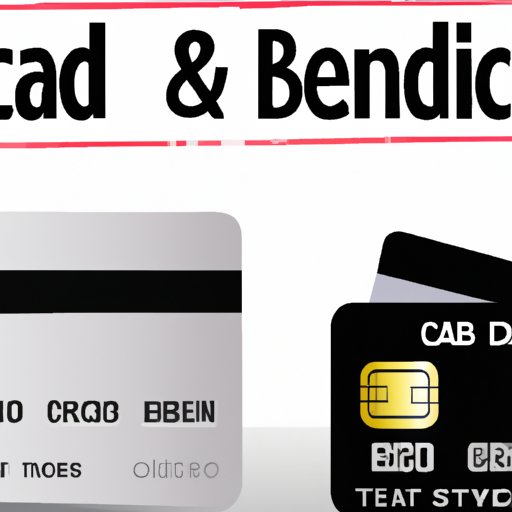Introduction
A debit card is a payment card that allows you to access your funds from a checking or savings account without having to carry cash or write a check. It looks like a credit card but works differently – when you make a purchase with a debit card, the money is withdrawn directly from your bank account. In this article, we’ll explore the basics of how a debit card works, including tips for choosing and using a debit card, understanding balance, best practices for security, advantages and disadvantages, and common problems and solutions.

Explaining the Basics of Debit Card Use
When you are ready to use your debit card, it’s important to understand exactly how it works. First, you need to choose the right debit card for your needs. Consider the fees associated with the card and if there are any rewards or other benefits that come with it. Once you have chosen the right card for you, it is time to start using it.
How to Choose and Use a Debit Card
When choosing a debit card, look for one that has low fees, good customer service, and additional benefits such as rewards points or cash back. Make sure you understand the terms and conditions of the card, including any fees and restrictions. Once you have chosen the right card, you can start using it. To do so, you will need to enter your PIN number or sign for the purchase. When you are done, the amount of the purchase will be deducted from your account.

Understanding Your Debit Card Balance
It’s important to keep track of your debit card balance so you don’t overspend. You can check your balance online, on the phone, or at an ATM. You can also set up alerts to notify you when your balance is getting low. Additionally, you should always keep your receipts and compare them to your statement to make sure all of the charges are accurate.

Tips for Keeping Your Debit Card Secure
Debit card fraud is an increasing problem, so it’s important to take steps to protect yourself. Always keep your card in a secure location and never share your PIN or other personal information with anyone. Additionally, you should regularly monitor your account for suspicious activity and report any unauthorized transactions immediately.
Advantages and Disadvantages of Debit Cards
Using a debit card has both advantages and disadvantages. On the plus side, they are convenient and allow you to easily access your funds. They also help you avoid carrying large amounts of cash and can help you stick to a budget. On the downside, they are vulnerable to fraud and can be limited in the types of purchases you can make. Additionally, some banks charge fees for their use.
Troubleshooting Common Issues with Debit Cards
Sometimes, you may encounter issues with your debit card such as declined transactions or incorrect charges. If this happens, contact your bank or card issuer immediately. They can help you resolve the issue and provide guidance on how to prevent it from happening again in the future.
Conclusion
Debit cards are a convenient way to access your funds without having to carry cash or write checks. Understanding how they work and taking steps to keep them secure can help you get the most out of your debit card. Being aware of the advantages and disadvantages of debit card use can also help you decide if it’s the right choice for you. Finally, if you do encounter any issues with your debit card, contact your bank or card issuer right away to resolve them.
(Note: Is this article not meeting your expectations? Do you have knowledge or insights to share? Unlock new opportunities and expand your reach by joining our authors team. Click Registration to join us and share your expertise with our readers.)
